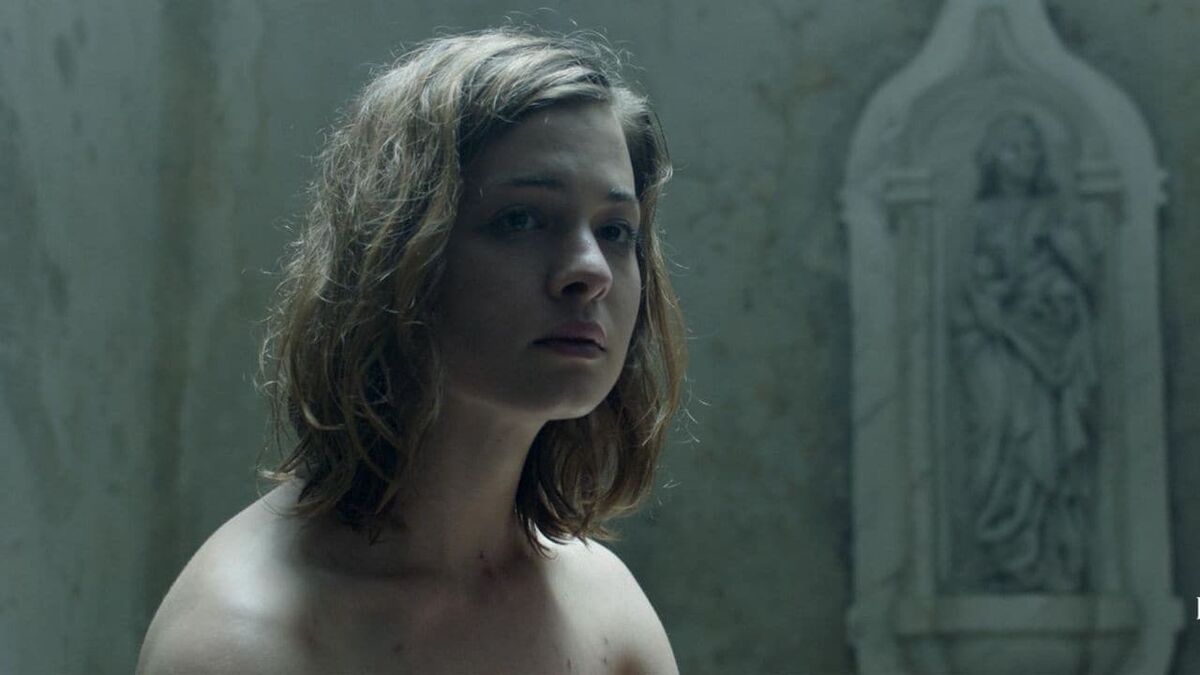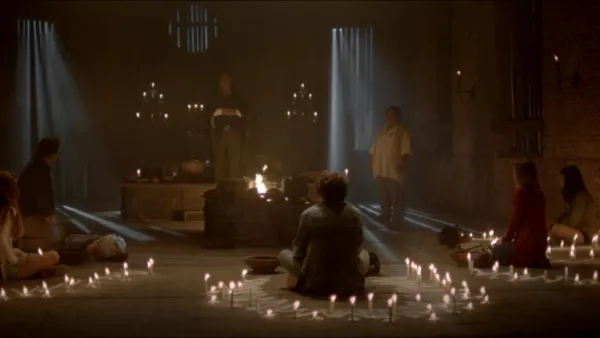Luciferina
Luciferina (2018), written and directed by Argentinian filmmaker Gonzalo Calzada, is a visually arresting, slow-burning horror film that fuses religious imagery, occult mysticism, and psychological trauma into a disturbing and provocative narrative. Set in Argentina, the film blends elements of exorcism horror and coming-of-age drama, offering a unique Latin American perspective on faith, sexuality, and the eternal battle between light and darkness.
The story follows Natalia, a 19-year-old novice nun who is forced to leave the convent after learning that her father is dying. Estranged from her family, she returns to her childhood home—a place steeped in tension, grief, and secrets. There, she reconnects with her emotionally unstable sister, Ángela, and uncovers clues about a traumatic past incident involving her mother’s mysterious death. While Natalia initially appears calm and devout, it becomes clear that she is struggling with internal demons and a powerful connection to spiritual forces she doesn’t fully understand.

Driven by both guilt and curiosity, Natalia joins a group of friends on a retreat to the jungle, where they plan to participate in a shamanic ritual involving ayahuasca—a powerful hallucinogenic brew used by indigenous communities for spiritual cleansing. The ritual, intended as a means of healing and self-discovery, instead unlocks deeply buried memories and awakens a sinister force tied to Natalia’s lineage. What follows is a descent into supernatural horror, as Natalia confronts a demonic presence that threatens to consume her body and soul.
Luciferina stands out in the horror genre for its bold visual style and thematic ambition. Calzada constructs a deeply symbolic world in which the boundaries between spirituality, sexuality, and horror are blurred. The film frequently juxtaposes sacred and profane imagery—convent interiors and pagan symbols, virginity and possession, innocence and corruption. These contrasts reflect Natalia’s inner conflict as she struggles to understand her identity and purpose, caught between her religious devotion and a dark inheritance that links her to demonic forces.

The film's cinematography is lush and atmospheric, with rich, shadowy colors and surreal dream sequences that evoke both beauty and dread. While it contains moments of intense, even shocking violence—particularly in its climactic exorcism scenes—Luciferina is more psychological than gore-driven. The pacing is deliberately slow, building tension gradually through mood, symbolism, and character development rather than jump scares.
Sofía del Tuffo delivers a strong, nuanced performance as Natalia, capturing the character’s transformation from passive observer to empowered spiritual warrior. The supporting cast, while less developed, adds layers of tension and emotional weight to the story. The film’s mix of Catholic iconography, indigenous ritual, and personal trauma gives it a distinctly Argentinian voice, setting it apart from more formulaic Hollywood exorcism stories.
Ultimately, Luciferina is a challenging and unconventional horror film that rewards patient viewers with a rich narrative and striking visuals. It’s a tale of inner awakening and demonic confrontation, wrapped in cultural mythology and psychological depth. For fans of arthouse horror and occult cinema, it’s a bold and memorable entry from South America’s growing genre film scene.



